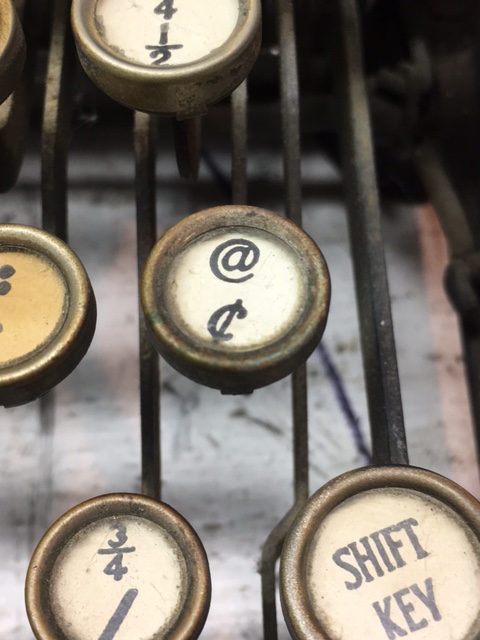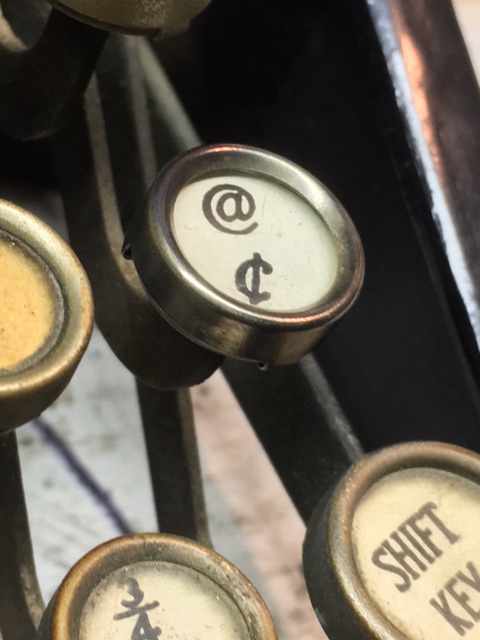If you find yourself in possession of a typewriter that’s so corroded and rusted and full of gunk it’s hard to tell what brand it may have been, sometimes you gotta get a little creative. But sometimes the sheer nastiness works in your favor.

Case in point, the keyboard on this damn Royal. For those of you who haven’t been following, it’s a 1916 Royal #10 which I have been obsessively restoring off and on for a few months. I finally got around to the keys, but the nickel plating is in such awful shape that a stiff wire-brushing with a Dremel is the bare minimum required to get them shiny again. However, this is a terrible idea: glass keys do not appreciate the violent attention of a bunch of metal wires spinning at high speeds. One inadvertent twitch and you’ve gouged permanent scratches in century-old glass. Not exactly a recipe for success.
Unless, of course, the keys are so completely caked in filth that they can take a few hits with a Dremel before getting down to the actual glass. The sheer disgustingness of this typewriter is its salvation: I don’t have to laboriously unclamp the key rings, refinish them, and reassemble (a project which would take weeks and much cursing) because I can wire-brush them with impunity. Any Dremel slippage will just take off a bit of the caked-on nicotine/skin cells/et cetera.

This machine’s horribleness is its salvation. It’s still a laborious, one-key-at-a-time, why-the-heck-would-anyone-do-this sort of process, but at the end I will have a typewriter with a shiny fresh keyboard and it will have taken an order of magnitude less time than if the keys had been slightly less nasty to start with.
Please don’t try this at home, kids – unless your typewriter is as filthy as this one. I’ve got a century’s worth of skin oil and tar and neglect protecting these keys but that’s not likely to be the case for too many others. Most that get this far down that particular road get tossed in the garbage. Which is a shame because there’s a perfectly good machine under all that, waiting for its chance to be useful again.
I switch between a dremel and steel wool for keys. I use a dremel for going around around the side, but on the top use steel wool. The grime always seems to have prtected the rings nickel as well, so thats always nice. Nice work!
LikeLiked by 1 person
Thanks for the tip. So far the dremel is working, but if I chicken out on any less-grimy keys I may reach for the steel wool.
LikeLike
That cleaned key looks fabulous.
LikeLiked by 1 person
Thanks very much! Only a few dozen more to go. This is gonna take forever.
LikeLike
Keys look great! Some of my best results “fixing” typewriters (as well as fountain pens, my other obsession) have been when I throw caution to the winds and try something really different (“It can’t get any worse, so let’s try this”). Unfortunately, it can lead to disasters also. In either case, the outcome is usually quit dramatic.
LikeLiked by 1 person
Definitely agreed! Luckily I had some extra keys to practice on before going to town on the real thing.
LikeLike